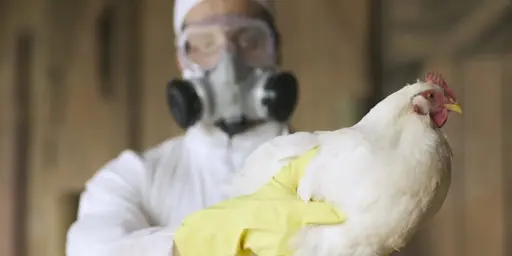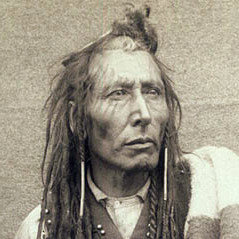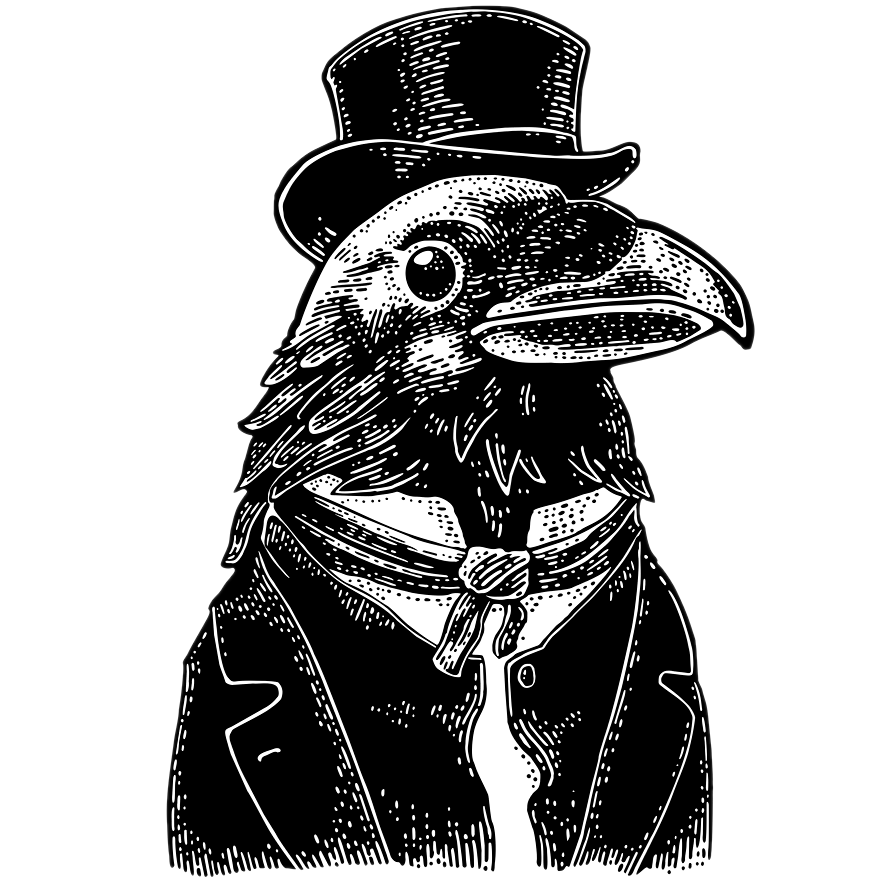- the case mortality rate is, by far, one of the worst we’ve ever seen for an influenza. https://cdn.who.int/media/docs/default-source/wpro---documents/emergency/surveillance/avian-influenza/ai_20250131.pdf
- we already have a vaccine for it https://en.m.wikipedia.org/wiki/H5N1_vaccine
- don’t panic but be educated https://m.youtube.com/watch?v=5CyVi4UzKxE
The US will end up with the highest fatality ratio than any other country and Trump will still blame Biden and Hillary’s emails
And they mostly won’t
Just saying this based off covid which came after sars2 and i remember in each time there were warning signs way WAY before and nobody really bothered.
Sure, covid may have shaken governments a bit and people maybe finally remember, but most will just let it go happen until its right around the door, to only then spring in action when its again too late
The article is behind a paywall. What does it say?
ChatGPT summary:
Over 40 top virologists from around the world are urgently warning about the growing threat of the H5N1 avian flu. While human-to-human transmission hasn’t been confirmed, sporadic infections in people with no known animal contact raise concerns about the virus adapting. H5N1 is now found in wild birds, livestock, and humans across all U.S. states and Canada, with over 168 million poultry culled and over 70 human cases—including one death.
The Global Virus Network (GVN) calls for stronger global action, urging governments to apply lessons from the COVID-19 pandemic. Key recommendations include:
- Strengthening animal and human surveillance, including testing milk, wastewater, and workers.
- Sharing genomic data rapidly.
- Enforcing protective gear and hygiene on farms.
- Providing self-testing for workers and healthcare access.
- Boosting funding, especially in high-risk areas.
- Investing in virus prediction, vaccine development, and clinical research.
Experts emphasize that early detection, community engagement, and international cooperation are crucial to preventing a potential human pandemic.
Sources:
Full article:
Leading virologists from over 40 countries are sounding the alarm over the increasing threat of H5N1 avian flu—which can cause coughing, body aches, fatigue, pneumonia, and other symptoms in humans—urging global leaders to step up with a range of measures and to use knowledge gained during the COVID pandemic.
“In the U.S. sporadic human infections with no known contact with infected animals highlight the possibility of viral adaptation for efficient human-to-human transmission,” Global Virus Network (GVN) scientists write in a commentary published this week in The Lancet Regional Health–Americas. “Concurrently, the virus continues to circulate in wild birds, backyard flocks, and hunted migratory species, further amplifying the risk to humans and domestic animals.”
The experts compel leaders to address the issue by boosting surveillance, enhancing biosecurity, and preparing for potential human-to-human viral transmission.
The authors note that more than 995 dairy cow herds and at least 70 people have been infected with H5N1, including severe cases and the first reported U.S. death.
“Understanding the current landscape of H5N1 infections is critical for effective prevention and response,” Dr. Sten H. Vermund, chief medical officer of the GVN and dean of the USF Health College of Public Health at the University of South Florida, said in a press release. “The virus’s ability to infect both animals and humans, combined with recent genetic changes, underscores the importance of proactive surveillance and rapid response measures.”
The highly pathogenic influenza virus is now circulating in all 50 states and Canada, the virologists warn, resulting in the loss or culling of more than 168 million poultry animals in the U.S. since 2022. While human-to-human transmission is not documented, experts warn that virus mutations or the combination of two flu viruses could increase transmissibility.
The researchers made several recommendations:
- Continuously monitoring animals, including testing milk, wastewater, and people working with infected animals, to track virus evolution that may lead to human-to human transmissibility.
- Accelerating the sharing of genomic data among global research networks to track virus evolution and spread.
- Using personal protective equipment and strict farm-cleaning protocols.
- Advocating for self-administered diagnostic tests for farmworkers and health care access for frontline medical workers.
- Providing more funding for responses, especially in high-risk regions.
- Investing in predicting traits of avian flu viruses from genetic data.
- Developing and rapidly administering vaccines to people and animals.
- Conducting clinical studies on the properties of emerging virus strains, potential therapies, and vaccines.
“A robust nationwide monitoring system is essential to quickly detect and quarantine affected animals and implement preventive measures to curb further spread and human infections,” said Elyse Stachler, GVN member and a research scientist at the Broad Institute of MIT and Harvard. “Further, we believe it is crucial to maintain trust and stakeholder buy-in for monitoring programs, particularly from farmworkers.”
“We are advocating for community-driven strategies to ensure the successful implementation of vaccines, if necessary,” said Dr. Christian Bréchot, president emeritus of the GVN and director of the USF Health Microbiomes Institute and senior associate dean for research in global affairs in the USF Health Morsani College of Medicine. “The situation with H5N1 demands heightened vigilance and collaboration across public health sectors. Early detection and robust surveillance are critical to prevent further spread.”
Future historians will say that Donald the dumb was a plague spreader.
Future historians? I like your optimism.
2044
This heresy scrubbed by The Mechanicum of Misinformation
FOR GOD EMPEROR TRUMP!
brain in a jar
Im just worried how bad it can get. 90% fatalities to pregnant women, that high. That’s not the COVID 1-2%
Meanwhile my country’s most powerful public health official: “vaccines are dangerous because they train viruses to be stronger, we should instead simply infect as many birds as possible”
Yeah, and this time masks will be illegal.
They can pry them out of my cold, dead hands.
Well, I think that’s the likely scenario
Time to stop all testing immediately so that there are no cases
Scientists: we have some good news and some bad news on the pandemic front.
Public: Gimme the good news first.
Scientists: We’re going to solve the housing crisis really quickly.
X/
That’s dark. +1
In the U.S., RFK has promised to personally consume every dead bird he finds on the side of the road.
That’s just the worm talking, it’s out for revenge
It wants a mate
I knew there had to be at least one positive trait.
Thankful JD was only into couches
That happened before bird flu was announced tho
“Top virologists raise alarm” … that didn’t help last time. People and government won’t take notice or want to take action until we see people with blood coming out of their eyes and dying in the streets, and even then, everyone will be more worried about the economy than in the body count.
at least worrying about the economy would be an improvement to just worrying about their personal freedom
They’ll just ask the elderly to die again
They wanted blue cities to die first. But somehow thought it would never get to the red places.
I need to watch 28 days later again.
There’s a movie for this. Bird flu in america, was mediocre but somehwat accurate for the death rate portrayed
Just in time for the sequel!
If you wait a while, we’ll be living in it
Don’t worry, just inject bleach! It worked last time. /s
I have a buddy who is a virologist. He sends me shit all the time about bird flu. The gain of function tests on it is wild. Also, note that we have seen this shit coming since 2012
- Fouchier, R.A.M., et al. (2012). “Airborne transmission of influenza A/H5N1 virus between ferrets.”
Published in: Science
Summary: Demonstrated that a small number of mutations could allow H5N1 to spread via respiratory droplets in ferrets.
Link: https://www.science.org/doi/10.1126/science.1213362
- Herfst, S., et al. (2012). “Airborne transmission of influenza A/H5N1 virus between ferrets.”
Published in: Science (companion to Fouchier’s work)
Link: https://pubmed.ncbi.nlm.nih.gov/22723413/
- Imai, M., et al. (2012). “Experimental adaptation of an influenza H5 HA confers respiratory droplet transmission to a reassortant H5 HA/H1N1 virus in ferrets.”
Published in: Nature
Summary: Kawaoka’s lab showed that reassortment of H5N1 with pandemic H1N1 genes could enable airborne spread in ferrets.
Link: https://www.nature.com/articles/nature10831
- Zhang, Y., et al. (2013). “H5N1 hybrid viruses bearing 2009/H1N1 virus genes transmit in guinea pigs by respiratory droplet.”
Published in: Science
Summary: Chinese researchers found that hybrid viruses combining H5N1 with H1N1 pandemic genes could spread between mammals.
Link: https://www.science.org/doi/10.1126/science.1243362
- National Science Advisory Board for Biosecurity (NSABB) Reports (2012).
Summary: Initially recommended redacting details of GoF studies due to bioterrorism concerns, later reversed.
2012? Bird flu been warned about since 2005 at least in my memory
The first case was in 1959 in Scotland. The first human case was in 1996 or 1997 in China. Then around 2002, there was an outbreak in SE Asia that caused alarm then in 2005 it spread by wild birds into Europe and triggered a big WHO warning. The first gain of function tests was in 2011 and 2012. My comment was about the gain of function tests. I probably could have worded it better
What is the point of gain of function research? Sounds unwise to devote resources to making deadly diseases deadlier.
I think the idea is that the diseases are likely to become deadlier whether we do research or not, but by experimenting we are able to get ahead of it.
We don’t “improve” diseases to make them deadilier and then just release them. The point of gain of function research essentially boils down to “How quickly can this disease become a serious issue and what do we expect that to look like?” with covid, thanks to gain of function research we knew it would quickly mutate and decrease in severity and we could significantly reduce harm by slowing the spread until it got to the point it’s at today.
I have to say it again, I am not a virologist. I am just a middle-aged peckerwood from South Texas so please don’t take anything I say on the subject of H5N1 as fact. It’s just my understanding of how things work in a field I have very little connection to lol.
Gain of function tests are very controversial. IIRC there were a few SARS-CoV-1 leaks in Asia from GoF tests in 2004 or 05. People use those to argue against them. It can also be argued that GoF tests help us map out what mutations we should be watching for so there will be faster responses when they eventually occur. It can also help to advance vaccine research.
When they are done they destroy the mutated viruses or store nonviable samples in secured labs. The security and precautions, for the most part, keep it safe. Or so we are told lol
In the big picture GoF tests are a drop, what should scare the dick off you is reassortment. That happens on its own in the wild. The hits include H2N2, H3N2, H1N1, and H9N2. IIRC H9N2 is a top donor for internal genes and making it a superstar in the reassortments of all sorts of avian flu.
Good luck
Donald and HHS: A1 said fake news. This is Obama’s fault.
This Week in Virology talks a bit about this at the 10min mark TWiV 1214: Clinical update with Dr. Daniel Griffin
Episode webpage: https://www.microbe.tv/twiv/twiv-1214/
Media file: https://traffic.libsyn.com/secure/twiv/TWiV1214.mp3?dest-id=25528
Also worth bookmarking the CDC summary… For as long as it’s up. https://www.cdc.gov/bird-flu/situation-summary/index.html














